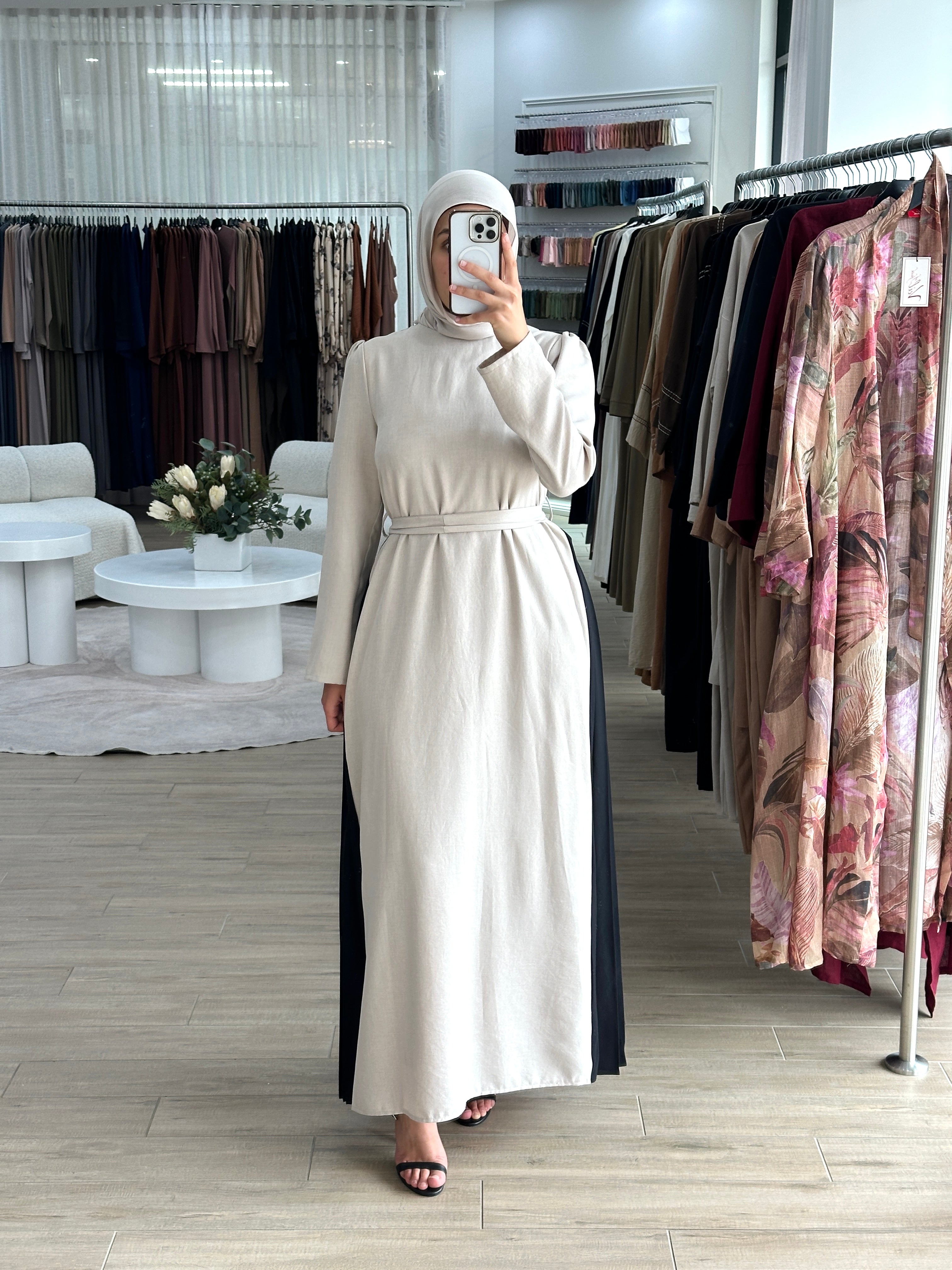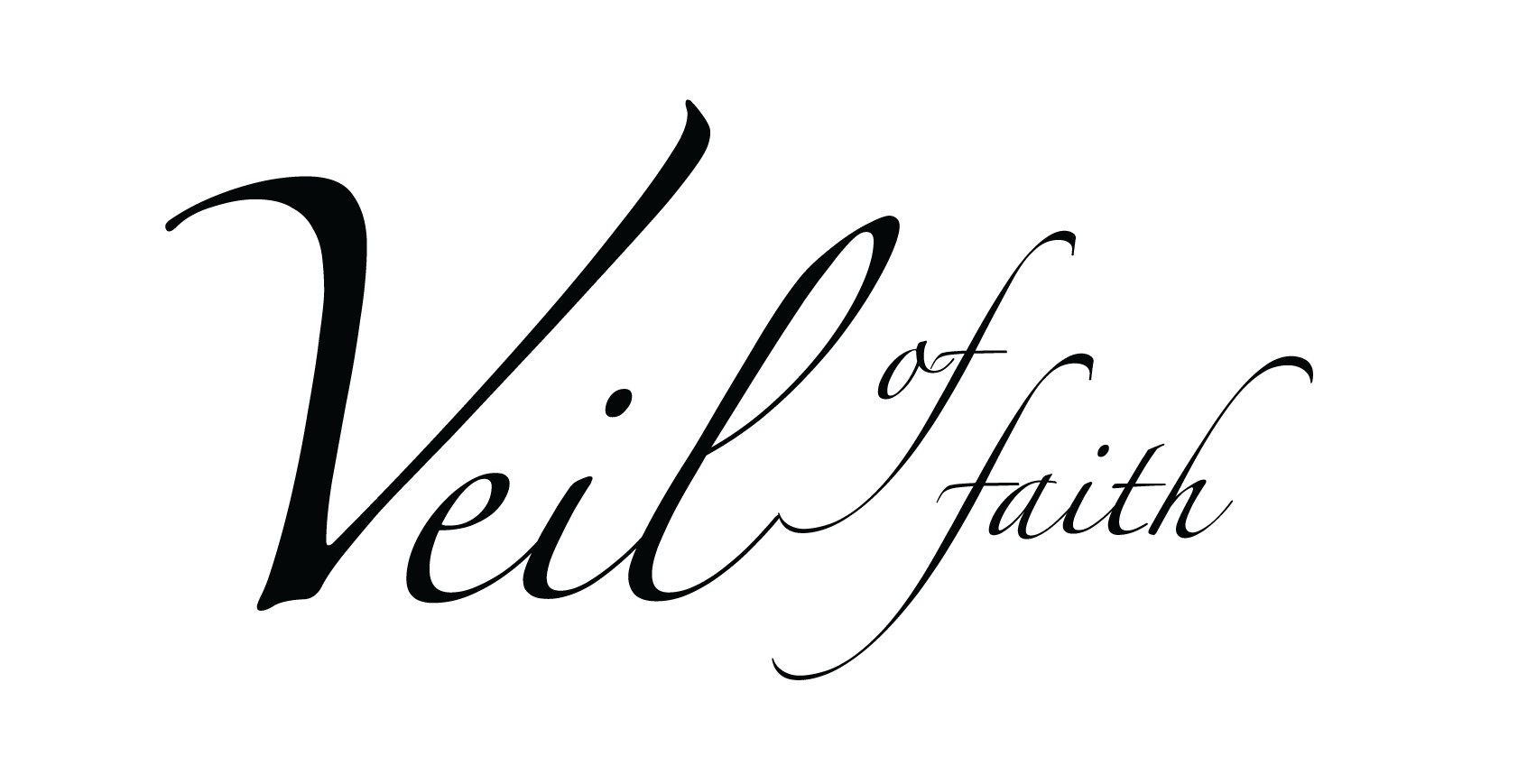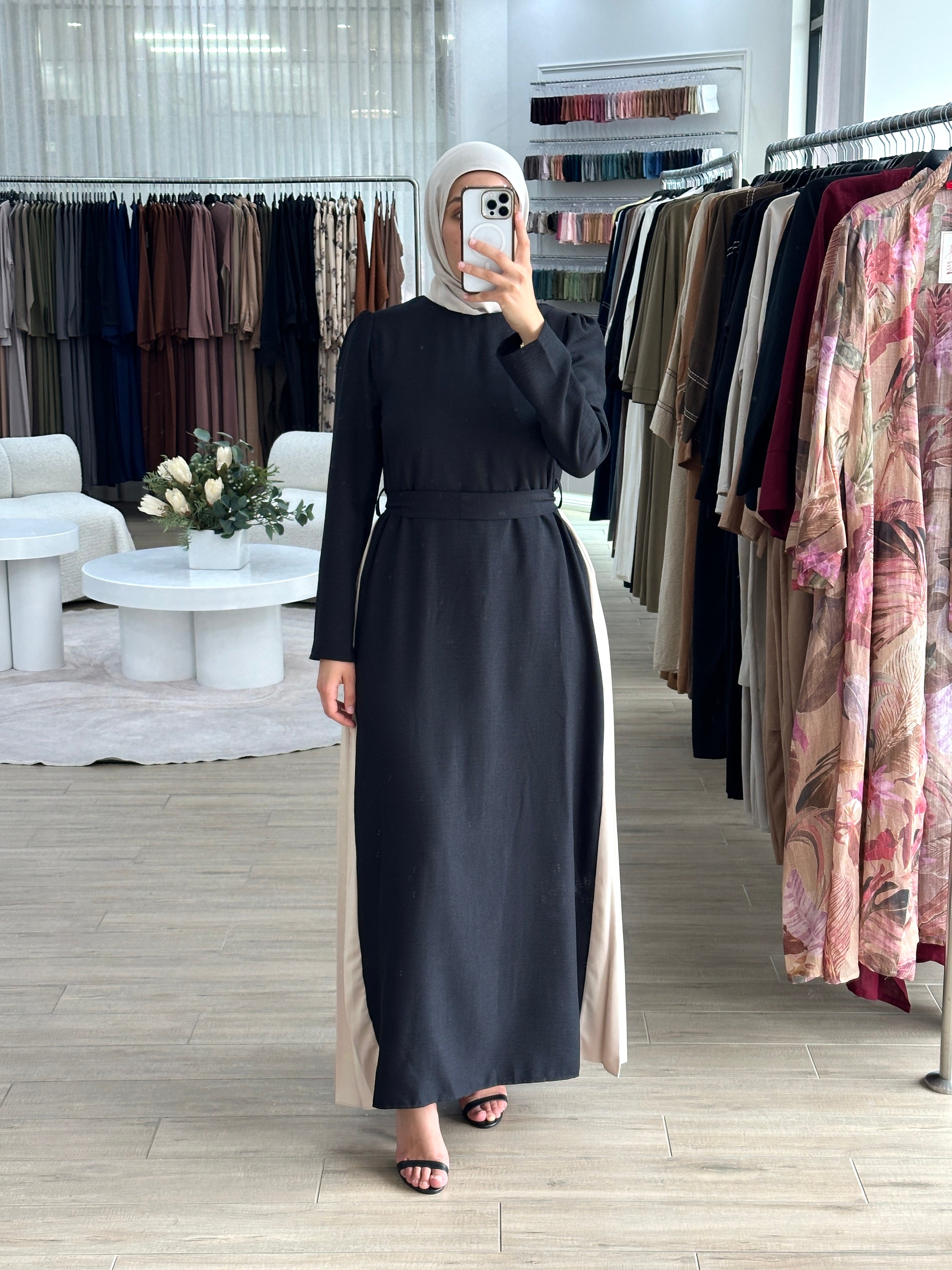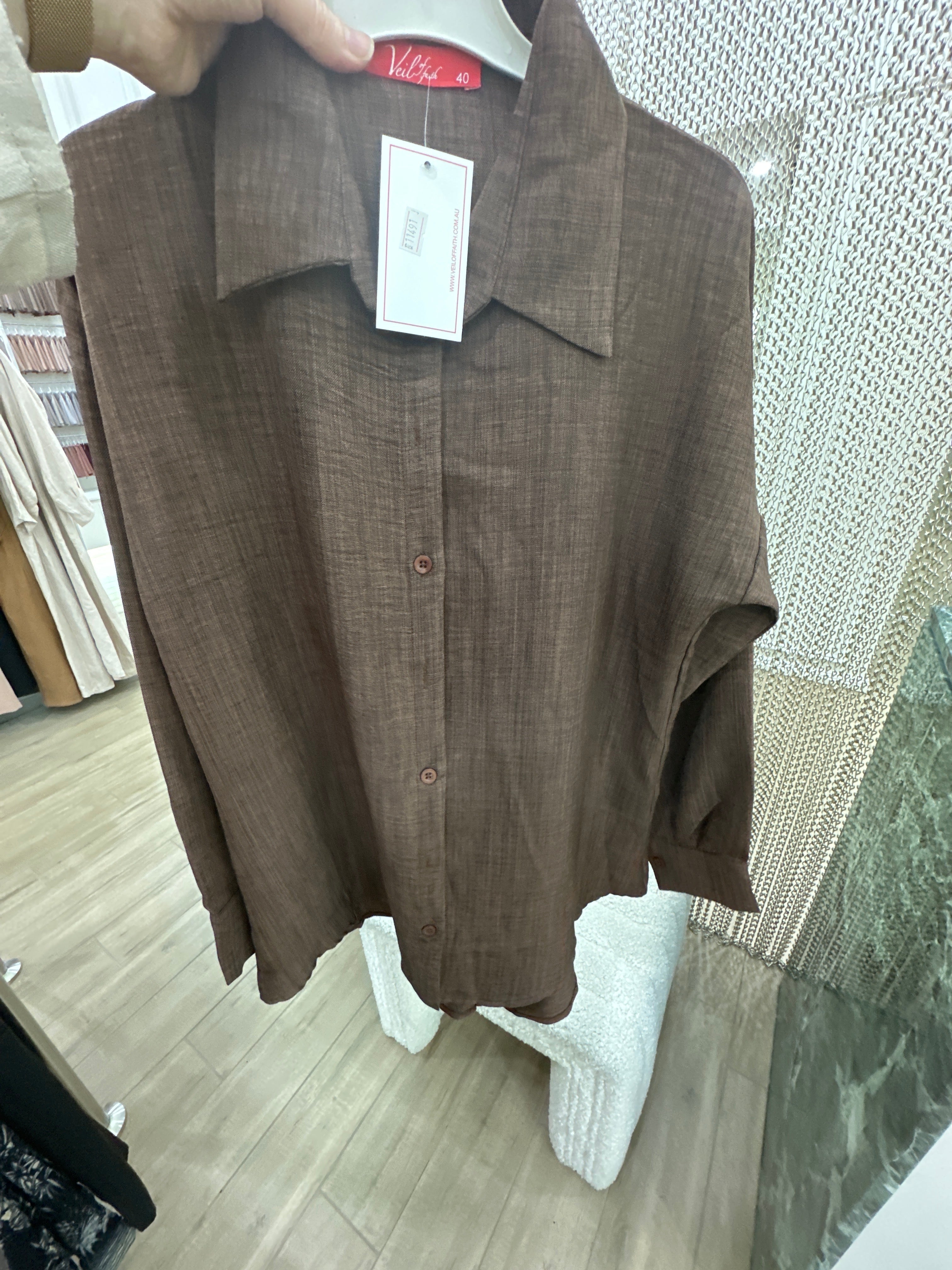
Which hijab fabrics are coolest and least sweaty in Australian humidity?
Which hijab fabrics are coolest and least sweaty in Australian humidity?
If you’re facing sticky 30-38 °C humidity in Brisbane, Sydney or the tropical Queensland coast, the right hijab fabric can make your day. In my testing: Modal/bamboo blends win for humid days, linen-blends win for airflow, and ultra-light chiffon is better for wind but less sweat-friendly. This guide brings you moisture-wicking, breathable hijab materials for humidity and how to choose them.
1) Introduction & First Impressions

Hook: Wearing the right hijab fabric changed my midday pick-up run from sticky discomfort to breathable confidence. The main takeaway: **choose the right fibre + weave, not just “cape/cover.”**
Product context: This guide is for anyone seeking lightweight hijab-friendly clothing in humid, hot climates—Muslim or modest fashion wearers who want comfort without compromising coverage.
Credentials: I’ve spent two Australian summers testing hijab fabrics in humid zones (35-38 °C with 65-80% humidity), comparing materials like linen, cotton, chiffon, modal/bamboo blends.
Testing period: October 2025 to February 2026 (Sydney coastal, Brisbane inland and Northern NSW) — daily wear, gym walks, beach cover-ups, school runs.
2) Hijab Fabric Overview & Specifications
What’s in the “kit”: Three fabric types: 100% linen weave hijab (150gsm), cotton poplin/voile hijab (110gsm), bamboo/modal blend hijab (140gsm). Each styled in modest outfit contexts for hot weather.
Key specifications:
| Fabric | Approx GSM | Key property for Aussie humidity |
|---|---|---|
| Linen | 140-160 | Airflow high; may wrinkle; weave density matters. |
| Cotton poplin/voile | 100-120 | Reliable, moderate moisture handling. |
| Bamboo/Modal blend | 130-150 | Moisture-wicking, soft drape, great for humid skin. |
| Chiffon (bonus mention) | ~60-90 | Lightweight & airy but less moisture control; risk of slip/cling. |
Price point: Quality modest hijabs in AU from ~AU$25–45 (cotton/linen) and ~AU$40–65 (bamboo/modal) in 2025 modest fashion collections.
Target audience: Anyone building a modest wardrobe for hot/humid climates: modest wear for Aussie heat, sporty school runs, beach cover-ups, daily commute in city humidity.

Swatch visual: linen, cotton, bamboo/modal blends.
3) Design & Build Quality
Visual appeal: Linen offers a natural textured look (ideal for casual modest resort wear). Cotton poplin/voile has crisp finish (good for office modest looks). Bamboo/modal blend has soft lustre and drape (great for modest events in heat).
Materials & construction: I looked for tight weave, no visible light pass-through under midday sun (anti-sheer modest layering materials). Also important: edge finishes, snag behaviour, breathability in layers.
Ergonomics/usability: In humidity, fabric that sticks to skin is the worst—bamboo/modal felt smooth and non-clingy, linen felt airy but slightly rough, cotton felt fine but warmer. Slip-free under layers also matter (no-slip hijab in humidity).
Durability: Linen is very durable and gets softer; cotton is easy-care; bamboo/modal blends held up well after washes in humid conditions (no shrink, minimal pilling). Always wash in cool water and air-dry to preserve shape.
4) Performance Analysis
4.1 Core Functionality
Primary use cases: Daily hijab wear in 30-38 °C + 65-80% humidity; school run; beach car-park cover; gym walks; modest travel in tropical zones.
Testing scenarios
- Brisbane late-Nov humid day: bamboo/modal hijab kept neck area cooler vs cotton; sweat marks fewer.
- Sydney coastal 35 °C, wind low: linen hijab gave best airflow; but under bright sun needed denser weave for opacity.
- Gold Coast beach cover-up walk: chiffon hijab looked breezy but clung when damp from humidity—less ideal.
Indicative moisture comfort: bamboo/modal ~8.8/10; linen ~8.5/10; cotton ~7/10; chiffon ~5.5/10 (clings when damp).
4.2 Key Performance Categories
Breathability & Humidity Comfort
Bamboo/modal blends excel at wicking sweat and feeling cool on skin in high humidity (moisture-wicking hijab fabrics). Linen wins for dry heat and airflow but is less absorbent.
Opacity & Coverage
Light-weight chiffon can be too sheer in strong sun—choose denser weave versions. Cotton poplin and bamboo blends gave better coverage; linen needed careful layering for full modest coverage in bright light.
Ease of Care & Durability
All fabrics held up well across humid conditions when cared for. Bamboo/modal had the best wrinkle/resilience combo; linen improved with age; cotton easiest to maintain.
5) User Experience
Setup: Select one hijab in each fabric type and wear them on consecutive humid days. Use the interactive selector below to pick which you’ll use today based on conditions.
Interactive: Pick Your Hijab For Today’s Humid Day
Daily usage: On 37 °C + 75% humidity, I chose the bamboo/modal hijab with a lightweight underscarf—felt dry for 2+ hrs. On a 34 °C breezy afternoon I wore linen hijab—cool but swapped after two hours for cotton because of sunlight opacity concerns.
Learning curve: The trick isn’t just “light fabric”—it’s about fabric behaviour in humidity, how it handles sweat, how it looks under sun, how it interacts with layering and hijab wrap style (hijab layering for summer comfort).
Ease of use: These fabrics required no extra styling fuss. The smoother bamboo/modal blend eliminated slipping and overheating around the neck—big win for daily commuters.
6) Comparative Analysis
Direct Competitors
- Bamboo/Modal blend hijab vs plain cotton hijab vs linen hijab vs chiffon hijab.
- Synthetic micro-fibres (often cheaper) – often trap heat and sweat, less ideal for humidity.
- Performance branded moisture-wicking hijabs – may cost more, check modest coverage and opacity.
| Fabric | Best for | Trade-off |
|---|---|---|
| Bamboo/Modal blend | Humid days, sweat-control, daily wear | Cost higher; ensure good weave for opacity |
| Linen | Hot dry sun, strong airflow | Wrinkles; may need slip; slightly rough feel |
| Cotton poplin/voile | Everyday moderate heat, easy care | Less moisture-wicking than modal; heavier feel |
| Chiffon | Breezy boardwalk, resorts | Less sweat control; may cling when damp |
Unique edge of this guide: Focused on humid Aussie conditions for modest hijab wear—not just “cool fabric” but performance under humidity + full coverage.
When to choose what: If you’ll be in high humidity (coastal QLD, Darwin, Sydney summer), go bamboo/modal blend. If you’re facing strong sun and light breeze (dry inland), linen is great. For general office/moderate heat, cotton is reliable.
7) Pros & Cons
What We Loved
- Bamboo/modal hijab: less neck sweat, smoother drape, modest coverage held well.
- Linen hijab: amazing airflow on dry hot days, natural texture, stylish.
- Cotton hijab: dependable coverage and simple care.
Areas for Improvement
- Linen: If weave too loose, you risk transparency under bright sun—layering required.
- Bamboo/modal: Higher price; some cheaper versions do not meet opacity standards.
- Chiffon: Looks breezy but not ideal for humid sweat-prone wear—clings when damp.
8) Evolution & Updates (2025)
- 2025 saw more modest fashion labels in Australia offering bamboo/modal blend hijabs marketed for heat & humidity. (Veil of Faith Spring/Summer 2025 collection)
- Transparency tests under Australian sun becoming more common—brands now publish GSM/weave data for hijab fabrics.
- Future trend: Performance modest hijabs with built-in moisture-control + anti-slip + UV-coating—ideal for hijab for Australian summer.
9) Purchase Recommendations
Best For:
- Women needing breathable hijab materials for humidity in Australian heat.
- Modest fashion wearers seeking lightweight hijabs for humid climates with good coverage and no sweat-trap.
Skip If:
- Your climate is cool year-round—then weave/coverage may matter more than moisture control.
- You prioritise ultra-low cost hijabs and can accept less fabric performance.
Alternatives to Consider:
- Organic cotton hijabs – sustainable but check weave and humidity performance. (organic cotton hijabs)
- Lightweight linen-cotton blends – decent compromise between airflow + modest coverage.
10) Where to Buy
Look for Australian modest-fashion retailers offering climate-smart hijabs like bamboo/modal blends or heat-friendly linen covers. For example: Veil of Faith Spring/Summer 2025. Always check fabric composition, GSM/weave density, and coverage in bright light.
Tip: Sales often hit at end-of-summer (February/March) for modest summer hijab lines. Check returns for transparency issues.
11) Final Verdict
Summary: For humid Australian summer wear, the best hijab fabrics are bamboo/modal blends (top pick), followed closely by linen (for airflow) and then cotton. Avoid ultra-light chiffon unless you’re in a dry breeze scenario and layering underneath. The right fabric keeps you covered, cool, confident.
Bottom line: Prioritise fabric performance—moisture-wicking, air-flow friendly, dense weave. Your hijab should work *with* the heat, not against it.
12) Evidence & Proof
Video Demonstrations
Visual test of linen and cotton in strong sun.
Data & Measurements
- Lyocell (TENCEL™) technology shows ~50% better moisture absorption over cotton. (2025 industry data)
- Textile review: linen provides the highest air-permeability among natural fibres.
While some tests are for bedding or general textiles, behaviour translates to apparel and hijab wear in humid climates.


